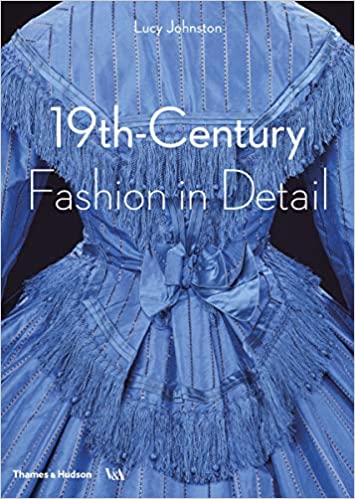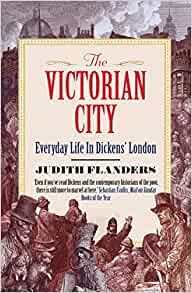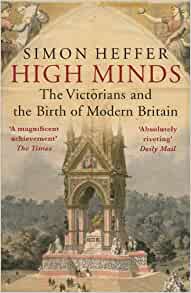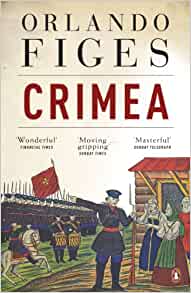I have been immersed in the Victorian world for quite a while now, working with The Duchess of York on Her Heart for a Compass, and then on my latest historical romance for Mills & Boon, The Earl Who Sees Her Beauty, which will be released in September this year. This, the first of a duet, is a much more domestic book, with Prudence and Dominic, my hero and heroine, very much eschewing society of all sorts, both high and low.
Prudence, my heroine, is fascinated by modern advances and their impact on everyday life, and in particular, she is interested in plumbing. At this point (1862) Joseph Bazalgette’s project to sort out London’s sewage was well underway, but sanitation in most houses would have been crude to say the least. In the bigger cities, crowded terraces and tenements would share a very small number of outdoor privies, and even in newer terraces, the flushing loo was a relative rarity. Water for the most part was supplied by a pump in the street, switched on at fixed periods of the day – and not every day. Posher houses had a cistern that could be filled from it to ensure a constant supply, but the luxury of twenty-four hour running water was still very much a pipedream (did you see what I did there!).
Three books formed the core of my research on Victorian everyday life, all of them highly readable, and to be honest, there was a lot of crossover between them: Judith Flanders’ The Victorian House; The Victorian City by the same author; and Victorian London by Liza Picard. The overall impression I was left with was that Victorian woman (or their servants) worked extremely hard to keep their houses clean, waging a constant battle against vermin of the four and six-legged kind, dust, fog, gas and mud. Keeping clean was an expensive business – so basically the poorer you were, the dirtier. I know this is self-evident and not much different from Regency times, but in Victorian times, as modernisation inched into the lives of the middle- and upper-classes, the gulf between them and the poorer became clearer, and more pungent.
Slum living, whether you were the ‘deserving’ or the ‘un-deserving’ poor, was horrendous, and graphically brought to life in Sarah Wise’s excellent history of The Nichol, The Blackest Streets, which vividly describes the privations of the slum housing which Dominic, my hero has to deal with. The tragedy which dominates my heroine’s back story was inspired by this book, which gives a chilling insight into the victims of slum landlords who turned their backs on tenants living in conditions which even Dickens would struggle to exaggerate. Houses sinking into the London mud, walls alive with vermin, one privy to four hundred people – conditions so awful that I actually had to tame them down in my book.
My romance is not all doom and gloom though. Though I never did manage to send Prudence and Dominic on my planned outing to a Victorian music hall, I did send them to the seaside, and to the International Exhibition. Lee Jackson’s Palaces of Pleasure helped me greatly with both – did you know, for example, that gentlemen still insisted on bathing naked in Margate, much to the horror of the locals and the other day trippers? I had such fun with Victorian swimwear too, which I’d previously researched. My Mum once described a knitted bathing costume she’d worn, remembering how heavy it was, and how it had chaffed – and the mid-Victorian costumes were much more substantial. I can’t imagine how anyone could actually swim in them.
And talking of costumes. 19th Century Fashion in Detail by Lucy Johnston is a wonderful book that really gets to grips with the structures of Victorian toilettes. I borrowed quite a few of those gowns for my heroine to wear, and when it came to gentlemen’s costumes, kitted my hero out using Jayne Shrimpton’s Victorian Fashion, a delightful little book which was a very well-timed gift from a friend – thank you again, Alison L. One of the challenges which I hadn’t really expected though, was getting my heroine undressed in the throes of passion. The History of Underclothes by C Willet and Phillis Cunnington was my guide through this garment-infested water, and is an excellent and fun read, even if you don’t have to cope with this problem. The biggest problem obviously is what to do with a steel-sprung crinoline and associated petticoats, which had to be donned and doffed over the head and couldn’t be slipped neatly and conveniently out of, but wealthy Victorian women wore an awful lot of clothes (the full regalia could weigh more than twenty pounds). I don’t know, perhaps that explains their (I’m sure false) reputation for being passionless.
I’ve reviewed Simon Heffer’s High Minds in detail on a previous blog. It is a huge tome, but it’s been invaluable in giving me a solid grasp of the politics of the era, and the thinking behind it all. Of particular relevance in the case of my Crimean veteran hero, was the fall-out of that conflict, the reviews of the army, promotions, discipline and living conditions. I had read Orlando Figes’ Crimea a while back, and it proved an excellent reference for me on some of the detail of Dominic’s experience of war (most of which never made it onto the page). For his attitudes to the officer class, and the incompetence of the senior ranks, I relied on Cecil Woodham-Smith’s excellent and highly readable The Reason Why.
I’m sure there’s many more books I’ve not mentioned, or that I’ve dipped in and out of and forgotten. There is, as ever, a great deal more reading and research done than written about, which makes me laugh when people describe historical romance as “a bit of light froth” or “historical wallpaper”. One last honourable mention though, goes to Monty Don and the new edition of his classic The Complete Gardener, which I just happened to be reading for my own pleasure (and my garden’s well-being) when I was writing about Dominic’s ideas for his own estate. The wildflowers and the wildlife which populate the overgrown lawn are straight from Monty. I wish that the deer would leave my lawn alone long enough for me to emulate this splash of summer colour.
Have you read any of these books? Do you have any similar recommendations? As ever, I’d love to hear your thoughts.
You can read all my reviews, good, bad and indifferent, over on Goodreads.













Comments
6 responses to “The Earl Who Sees Her Beauty – Research Reading”
I love your depth of research, it shows in your writing. Some of these books are fascinating, I often dip into a bit of non fiction, as I love learning new things.
Hi Rosie. I think one of my (many) problems with this book was that I simply got too caught up in the research, but then again it will pay off with the next one, I hope.
Let’s just say it’s really obvious when HR is “historical wallpaper.” I’ve read some truly awful stuff, which inexplicably tends to be popular with certain types of readers, and personally avoid writers who revel in laziness and cut corners in service of plot, even if it doesn’t make any sense for the time period that they are supposed to be writing in. I suppose some people want nothing but cotton candy fluff when they read romance, but there are those of us who appreciate the challenge of writing a work truly set in a time period beyond our own, and find the differences in daily life just as fascinating as the characters and their romance. Research enriches both the writing and the reading experience, IMO, and I am forever grateful that there are authors who put in the hard yards to make their work as authentic as possible, while not sacrificing good storytelling. It’s a very fine line, but those who toe it successfully are amazing!
I’m going to give a shout out for all the Harlquin/Mills&Boon Historical writers here who I know put a ton of research into their books from all periods, because in our group there’s no end of discussion on obscure facts, sharing of research in all forms, and fact-checking. Speaking personally, while I loved reading Georgette Heyer as a young adult, I came very late to the genre and it was my own love of all things history that brought me to writing it – my first ambition was to write history and for a while I did quite a bit of that, under my own name. I actually came quite late to studying history too, through the wonderful Open University when I was bored rigid with my day job, and had intended to study English Lit, but history claimed my heart. My dream would be to do a PhD full-time, but that’s never going to happen, and so I have my research for my fiction, which is a lovely and extremely enjoyable compromise.
I do know that for some readers the history isn’t the point, and I’m always acutely aware in writing a romancethat it can’t take centre stage but I agree with you, it forms the backdrop, it affects how people live, their attitudes, how they behave and think, and their life chances. I was fascinated at the evolving differences from what we’d call late Regency into early/mid-Victorian, and that’s what I have tried to write in the book that is just done. The fascination with image, for example, because of the development of photography, and the evolution of sensationalism in journalism, in writing and on the stage. I don’t know if you can watch BBC iplayer, but there’s a brilliant series by Dr Lucy Worsley on the fascination with murder and the murder mystery called A Very British Murder that really gets to grips with this – there’s a book too, which I have, but the series of 3 programmes is excellent.
I hadn’t meant to write so much, but your comments always set me off on a rambling path! Back to Regency for the short term for me though, with a Christmas short to finish.
Of all the major houses, I think Harlequin has the strongest HR line/stable of authors. I definitely read more there, and as far as I can tell, the vast majority of my favorite authors either started there, currently write there, or occasionally still submit work there 🙂 If I was going to recommend a new fan to good HR, I’d definitely point them towards HQN/M&B.
I already have your September release and your Christmas anthology on my HQN wishlist so I can order them the second they’re available, haha. I’m excited that there are going to be 2 Regency-era Christmas anthologies this year, both of which feature favorite authors of mine! Talk of Christmas coming early, LOL!!
You’ve given Lucy Worsley several good reviews on GR and I’m definitely planning to check out her books. I’ve never tried to use the iPlayer from here but if I can, I’ll be on the lookout for that series, as it sounds right up my alley.
I better get that Regency Christmas short done then!